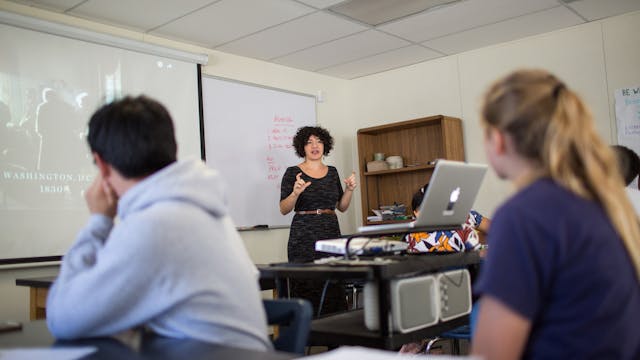Following the murder of George Floyd two years ago, we saw a national mobilization that challenged the beliefs and institutions that sanctioned the behavior of his murderer and accomplices.
Yet despite nationwide protests, financial commitments from corporate America, legislative pushes, and bias training—police killings and the disproportionate burden borne by Black Americans has not changed. The Washington Post’s Fatal Force tracker reports that more than 1,050 people have been killed by police in the past 365 days. While Black Americans account for less than 13 percent of the U.S. population, the tracker demonstrates that they are killed by police at more than twice the rate of white Americans.
While investments and reform efforts are necessary to address the centuries of neglect Black communities have faced, their failure to change racial disparities illuminates a missing piece. In order to create the systemic changes required to realize racial justice, we must transform ourselves into students and recommit to learning how our shared history influences modern practices. We do this first by equipping our educators with the resources they need to effectively teach our students our hardest historical lessons, including George Floyd’s death and the history that envelops it.
My organization, Facing History and Ourselves, and many others have been doing this necessary work. We provide urgently needed resources that give educators tools to engage students in critical conversations about the issues affecting their lives and garnering national headlines. Facing History encourages educators to reflect on what events mean to them before they begin a dialogue with their students. This approach allows educators to teach and discuss the broader history behind a given event, contextualize the current issue and formulate the most equitable solution.
Looking Back to Understand
Learning our shared history can help us see the world through a common lens, providing a shared point of reference for a path forward grounded in truth. Without first processing the past and understanding what was done to the most vulnerable in our country, we cannot expect meaningful progress toward the destigmatization of Black people, particularly by institutions such as law enforcement.
School curricula can, and should, empower educators and students to learn about the history of the criminalization of Black actions, which reveals parallels between prior racialized legislation and what transpired on the day of George Floyd’s death.
George Floyd’s murder was a manifestation of earlier sentiments echoed by some of America’s leading voices. Supreme Court Justice Roger Taney voiced his utter disregard for Black personhood in the Dred Scott v. Sandford decision, which submitted that the Constitution relegated African Americans as mere “property.” In line with this general consensus, slave owners needed an entity to ensure their “property” remained so, and thus slave patrols were enacted.
The post-Civil War era then ushered in the advent of “Black codes,” described as laws that “criminalized every form of African American freedom and mobility, political power, [and] economic power.” After Black codes were negated by the Civil Rights Act of 1866 and the 14th Amendment, the story of criminalizing Black actions merely transformed again—this time into vagrancy laws criminalizing being “poor, idle, dissolute, immoral, drunk, lewd, or suspicious.” These laws served as thinly veiled attempts to continue the subjugation of Black people.
Teaching the Truth
A lesson centered on the historical events that preceded George Floyd’s murder should be widely taught. However, as we are witnessing throughout this country today, we have yet to come to terms with a common version of our history encapsulating it in its entirety—the good as well as the bad. That is why we need organizations that are willing to help educators teach difficult subjects, including a fuller accounting of history, in a way that remains above the partisan fray.
We need to embark on such a mission because we cannot rely on the assumption that future generations will be more civically engaged in improving their communities than older generations. Every day, we see that students who are actively taught our collective history gain analytical thinking skills, empathy and tolerance, and they feel increased civic responsibility and believe that we can make a difference in the world. These students learn the importance of recognizing historical parallels and calling things out that are wrong.
Classrooms are thus uniquely situated to engage young people in critical conversations about our nation’s history so that positive change can be created at all levels of our society. Students are not immune to the most pressing issues of our time. On the contrary, they are the ones positioned and eager to take action. Students are forming clubs, organizing sit-ins and walk-outs, and engaging in advocacy about all sorts of issues.
These students will be our next leaders, from judges and law enforcement officials to educators and everything in between. Ensuring that these young individuals learn to stand up to bigotry and hate now, in a nurturing environment, will imbue them, their workplaces and our collective culture with the proper lens and tools to create a more just society.


